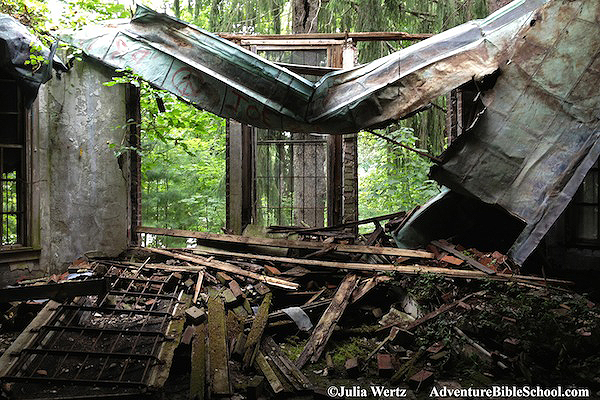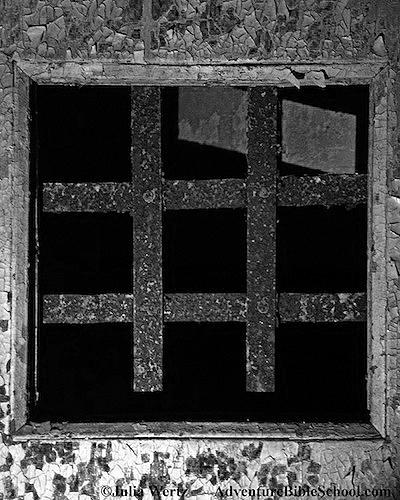In the world of urban exploring, there is a common phenomenon one could aptly refer to as the “money shot,” meaning an explorer will spend all day dicking around in asbestos-laden rubble just to photograph one, infamous scene. The Grafton State Hospital hydrotherapy tubs are a prime example of that.
Grafton State Hospital was built in 1901 in Grafton, MA, as part of a farm colony for “chronically insane” patients at the nearby Worchester State Hospital. (Both facilities were psychiatric hospitals.) Over the following decades, the campus grew to 1,200 acres, and at its peak in 1945, held 1,730 patients.
The campus layout was based on the satellite colony system and cottage plan. Separate colonies housed different types of patients, organized by blunt classifications such as “excited,” “violent,” etc. Smaller cottages were for stable patients in the process of transitioning out of the hospital, or at least out of the wards.
The hospital closed in 1973 due to deinstitutionalization, which happened worldwide throughout the ’70s. Deinstitutionalization was the process of closing down large, state-run psychiatric hospitals in favor of smaller, privately run facilities. It was prompted by the discovery of antipsychotics, mainly Thorazine, massive budget cuts, and financial reallocations.
Many buildings on the campus are still abandoned, but Tuft University uses some as part of their Cummings School of Veterinary Medicine. Jobs Corps also operates on-site, and the Grafton Commuter Rail will drop you right next to the old asylum.
That’s it for the history, let’s get through some photos and then address the hydrotherapy tubs:
That’s a terrible photo, but it at least gives you an idea of the unique style of the heating ducts going into the patients’ rooms.
The morgue (above) and the morgue vent regulator (below.)
Window into a patient’s room. (FYI a bunch of these photos are just iphone shots using a flashlight.)
Painted signs in the basement tunnels pointing towards the cafeteria and Pines, meaning the Pines Group, which consisted of “excitable” women.
pretty good mid-century bathroom
Last but not least, the hydrotherapy tubs. This is a very cursory overview of the tubs, as hydrotherapy is/was a vast practice with many techniques. Hydrotherapy is the use of water to attempt to relieve or cure ailments. While it’s still used today in various forms, its use in asylums during the 19th and 20th centuries ranged from gentle treatment to brutal torture. At its best, it was used to calm hyperactive patients by simply relaxing them in a warm bath. At its worst, freezing or scalding water was used, occasionally leading to death, and patients were occasionally left in the tubs for days at a time, causing their skin to slough off upon removal from the tub. Obviously, that aspect of hydrotherapy has been eliminated.
This is definitely the most commonly photographed scene at Grafton. It’s really the only reason to go, but it’s worth the hassle because it’s so uncommon to find anything that even looks remotely close to its original state in abandoned asylums anymore. Although the glass on the tub controls has been smashed, the tubs and their canvas restraints (although rotting and covered in mold) are still there, and the room is remarkably devoid of graffiti.
The tub sheaths were used to keep the patient submerged, with only their head sticking out through the canvas.
You can see more photos in my Grafton State Hospital Flickr set, or share on imgur.
_______
Disclaimer: If any information is incorrect, if you have more info, or if you’d just like to tell me something, feel free to contact me.
To support my work and see new comics, go here. To buy books, original artwork, merch, and more, visit my website store. Follow me on instagram.














Sorry, the comment form is closed at this time.